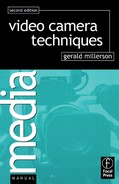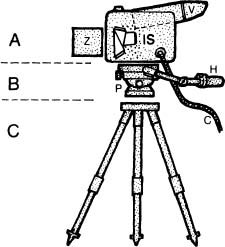Most of us feel awkward when handling a piece of technical equipment for the first time. Even when we are familiar enough with similar devices, there will usually be some changes in design or layout that can leave us uncertain. Although the video camera is technically complex, it is surprisingly straightforward to operate. At first you may feel a little apprehensive, but nowadays even modestly priced equipment is pretty foolproof, and remarkably rugged. The answer to most difficulties is practice. And don’t forget the old adage: ‘When all else fails, read the instructions’!
You can always check the results
You don’t need to be ‘technically-minded’ to use a video camera successfully. There will of course, be those odd occasions when things go wrong, or you don’t get the results you expected, but the video camera has one outstanding advantage. You can replay the videotape immediately to check your work on the spot; either using the camera viewfinder, or a picture monitor. This enables you to review what you have just shot and to correct any errors – unlike film, which has to be processed and projected before you can confirm that all is well.
Remember, the video camera is simply an electronic device that continuously produces pictures as long as it is powered. Videotape is cheap, and can be re-used over and over, so you can shoot generously where necessary, without wasting stock.
To get the best out of your camera, you need to use it selectively. Simply setting controls to ‘automatic’ and pointing your camera at the scene may produce great results, but the magic of good cameracraft comes from a blend of skills:
• Easy familiarity with the camera’s controls, so that you can operate them confidently and accurately.
• An eye for pictorial opportunities; selecting a good viewpoint, composing effective shots.
• And then there are those less tangible qualities that the best camera operators have, including dexterity, stamina, patience, and a good memory!
The video/TV camera
The camera unit consists of:
A. The camera head Z, zoom lens. IS, image sensors (CCDs). V, viewfinder. C, camera cable (taking technical supplies to the camera, and the resultant video to the camera control unit/CCU). A quick-release wedge-mount under the head slides into a corresponding recessed plate on the panning head.
B. The panning head (pan head) This enables the camera head to tilt and turn (pan) smoothly. These movements can be restrained by deliberately introduced friction (drag), and can be locked off to hold the head rigid. Tilt balance positions the head horizontally, preventing it being nose- or tail-heavy. One or two attached pan (panning) handles (H) enable the cameraman to direct and control the camera head.
C. The camera mounting This can take many forms, e.g. camera-clamp, monopod, tripod, pedestal, crane.

